Kailadevi Wildlife Sanctuary is a pristine expanse of natural beauty and diverse wildlife nestled in the heart of Rajasthan. Covering approximately 676 square kilometres, this sanctuary is a vital habitat for various species of flora and fauna. This sanctuary is near the vibrant town of Karauli, the sanctuary is named after the revered Kailadevi Temple, which lies within its boundaries. Known for its rugged terrain, dense forests, and serene lakes, Kailadevi Wildlife Sanctuary offers a unique experience for nature lovers and wildlife enthusiasts.
Kailadevi Wildlife Sanctuary Location
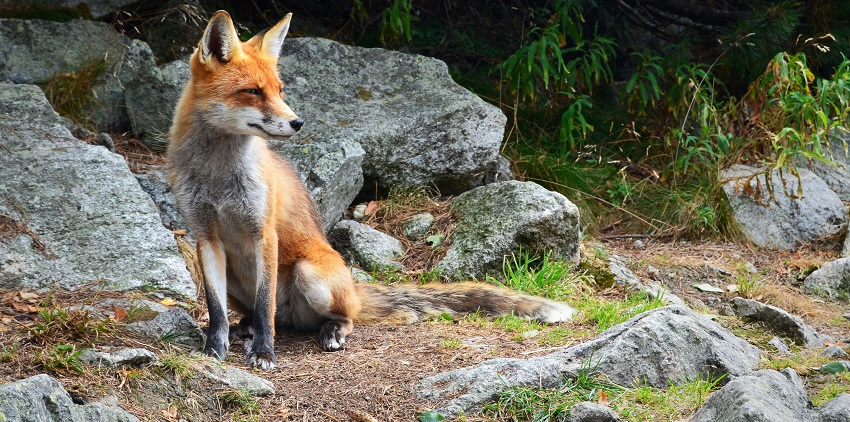
Photo: Katerina Bartosova / Unsplash / Image For Representation Only
Kailadevi Wildlife Sanctuary is in the Karauli district of Rajasthan, India. The sanctuary’s location, surrounded by rolling hills and dense forests, offers a tranquil escape from the hustle and bustle of city life. The lush greenery and diverse wildlife make it a haven for nature enthusiasts and a perfect destination for those seeking solace in nature.
Suggested Read: Explore The Top Wildlife Sanctuaries In Rajasthan For A Wild Adventure
How To Reach Kailadevi Wildlife Sanctuary

Photo: Rocker Sta / Unsplash / Image For Representation Only
By Air: The nearest airport to Kailadevi Wildlife Sanctuary is Jaipur International Airport, approximately 175 kilometres away. From the airport, you can hire a taxi or take a bus to reach the sanctuary. The drive from Jaipur to Kailadevi offers scenic views of the Rajasthani landscape and is an enjoyable journey for those interested in exploring the region.
By Bus: Karauli is well-connected by road, with regular bus services from major cities in Rajasthan, including Jaipur and Agra. From Karauli, you can hire a taxi or use local transport to reach the sanctuary. The bus journey provides an opportunity to experience the rural charm of Rajasthan.
By Rail: The nearest railway station to Kailadevi Wildlife Sanctuary is at Karauli, approximately 30 kilometres away. From the station, you can hire a cab or take a local bus to the sanctuary. The train ride offers picturesque views of the surrounding countryside and is a comfortable way to travel to the region.
Places To Visit In And Around Kailadevi Wildlife Sanctuary
You can include this list of places to visit around the sanctuary in your itinerary while visiting the Kailadevi Wildlife Sanctuary.
1. Kailadevi Temple

Photo: Divyendu sharma / Wikimedia Commons
Kailadevi Temple is a prominent religious site nestled within the sanctuary, known for its deep spiritual significance and gorgeous location. It is dedicated to the goddess Kailadevi and attracts thousands of pilgrims and tourists annually, who come to offer prayers and seek blessings. The temple’s tranquil surroundings, coupled with its beautiful and intricate architecture, create a peaceful ambience perfect for reflection and worship. Within the complex, visitors will find several smaller shrines dedicated to other deities, enhancing its spiritual charm.
Timings: 6 AM – 7 PM
Entry Fee: Free
Suggested Read: Top Temples In Rajasthan To Visit On A Religious Trip
2. Kailadevi Lake
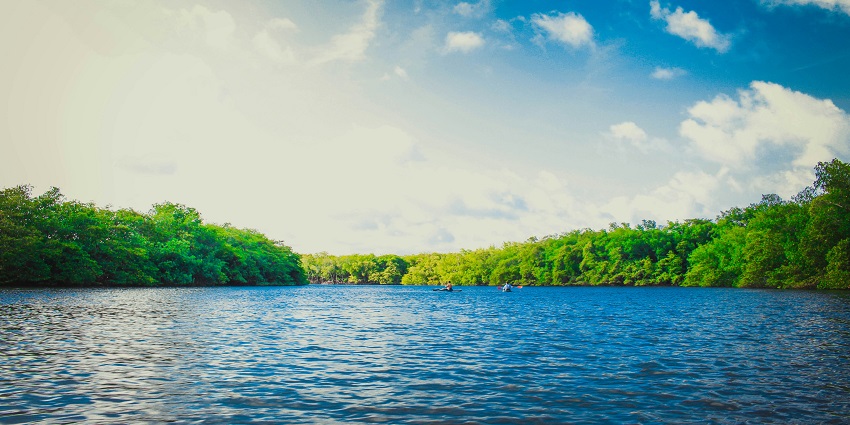
Photo: Gláuber Sampaio / Unsplash / Image For Representation Only
Kailadevi Lake is a serene and stunning body of water located near the Kaila Devi Temple in Rajasthan. Surrounded by natural beauty, the lake is a tranquil retreat for pilgrims and visitors alike. The calm waters of the lake reflect the surrounding hills and lush greenery, creating a peaceful ambience ideal for relaxation and reflection. The lake not only enhances the spiritual experience of visiting the nearby temple but also serves as a popular spot for nature lovers and photographers who appreciate the scenic landscapes and serene environment.
Timings: 7 AM – 6 PM
Entry Fee: Free
3. Madhogarh Fort
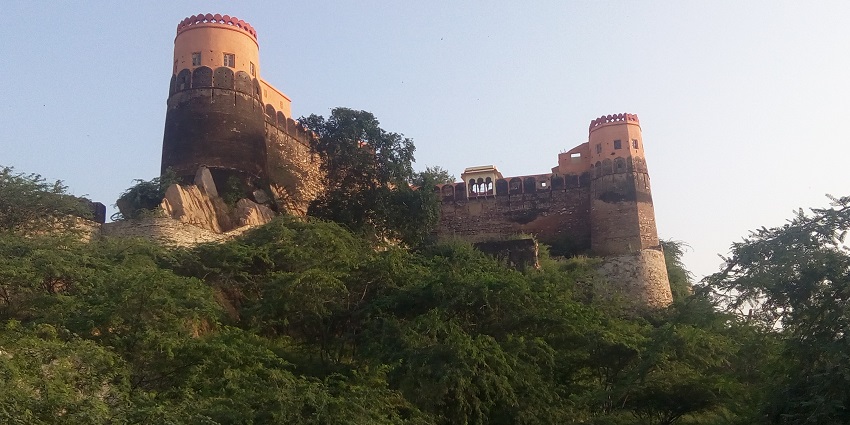
Photo: LEKHRAJ MAHAWAR / Wikimedia Commons
Madhogarh Fort is a historic and captivating fort situated near the sanctuary, offering an intriguing glimpse into Rajasthan’s rich and vibrant history. Constructed in the 17th century, this majestic fort is renowned for its impressive architectural features, including its robust stone walls, intricately designed arches, and ornate balconies. Its historical significance and well-preserved structure make Madhogarh Fort a compelling destination for history enthusiasts, architecture aficionados, and visitors eager to delve into the cultural and historical heritage of Rajasthan.
Timings: 9 AM – 5 PM
Entry Fee: ₹100
Suggested Read: A Journey Through Rajasthan Forts
4. Raja Sahil Vaid’s Garden
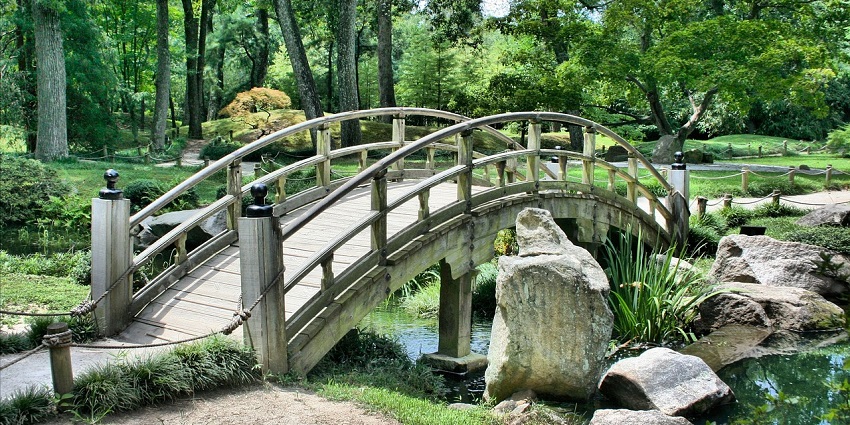
Photo: JamesDeMers / Pixabay / Image For Representation Only
Raja Sahil Vaid’s Garden is a meticulously landscaped and enchanting garden located on the tranquil outskirts of the sanctuary. This beautifully designed garden boasts a diverse collection of plants, flowers, and trees, creating a lush and vibrant tapestry of colours and fragrances. Visitors can enjoy a peaceful escape amidst the natural beauty of the region, immersing themselves in the soothing ambience. Its harmonious blend of floral beauty and serene surroundings ensures a delightful experience for nature lovers and families alike.
Timings: 8 AM – 6 PM
Entry Fee: ₹50
Where To Stay

Photo: peterweideman / Pixabay / Image For Representation Only
Accommodation options near Kailadevi Wildlife Sanctuary range from luxury resorts to budget guesthouses. In Karauli, you can find several hotels and guesthouses offering comfortable stays and basic amenities. Popular options include the Hotel Bhanwar Vilas Palace, which provides a blend of traditional Rajasthani hospitality and modern comfort, and local guest houses that offer a more budget-friendly stay. For a unique experience, consider staying in a heritage property or eco-lodge that provides an immersive experience in the natural surroundings.
Suggested Read: Offbeat Places In Rajasthan
Where To Eat
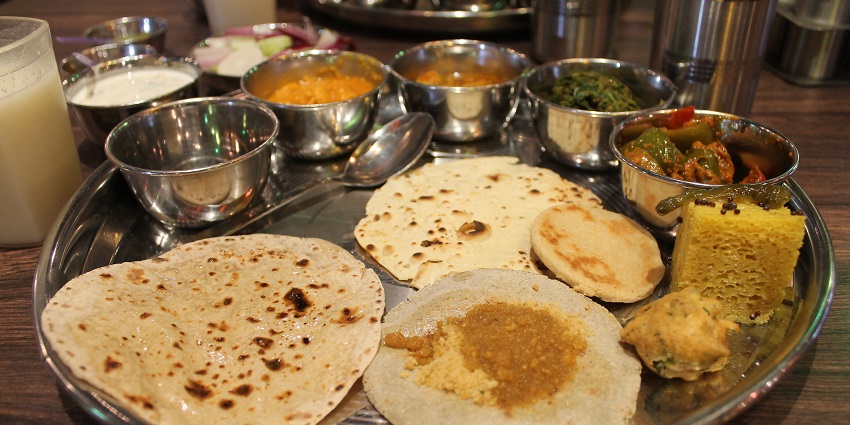
Photo: Connie Ma / Wikimedia Commons
Dining options near Kailadevi Wildlife Sanctuary include a mix of local and regional cuisine. Many hotels and guesthouses offer in-house dining with a variety of dishes, from traditional Rajasthani fare to continental options. Popular local eateries in Karauli serve authentic Rajasthani dishes, including dal baati churma, gatte ki sabzi, and kachoris. For a unique dining experience, try a traditional Rajasthani thali at one of the local restaurants, which provides a comprehensive taste of regional flavours.
Best Time To Visit Kailadevi Wildlife Sanctuary
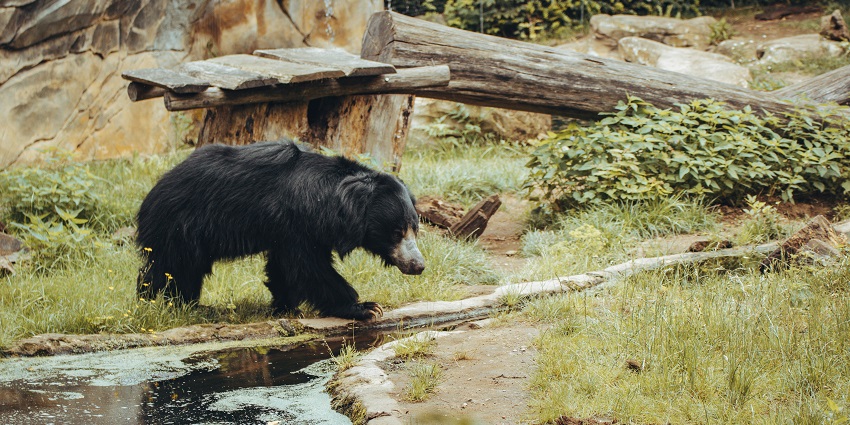
Photo: Dana Ward / Unsplash / Image For Representation Only
The best time to visit the sanctuary is from October to March. During these months, the weather is cooler and more comfortable, making it ideal for wildlife viewing and outdoor activities. The temperatures are pleasant, and the risk of rain is minimal, allowing visitors to fully enjoy the sanctuary and its surroundings. The summer months can be extremely hot, while the monsoon season from June to September can bring heavy rains and make the terrain difficult to navigate.
Suggested Read: Things To Do In Rajasthan
Other Factors To Consider

Photo: Doston Nabotov / Unsplash / Image For Representation Only
Average Cost Of Trip
A typical trip to Kailadevi Wildlife Sanctuary can cost between ₹8,000 to ₹15,000 per person, depending on your choice of accommodation, dining, and activities. Luxury stays and guided tours can increase the overall cost, while budget options and self-guided tours can help manage expenses. Be sure to factor in costs for travel, entry fees, and any additional activities you plan to undertake.
Tips For Travellers
- Ensure you book your accommodation and safari slots well in advance, especially during peak tourist seasons, to secure the best options and rates.
- Bring comfortable clothing, a hat, and sunscreen to protect yourself from the sun. Also, carry binoculars for wildlife spotting and a good camera to capture the natural beauty of the sanctuary.
- Follow all guidelines and regulations while visiting the sanctuary to ensure a safe and respectful experience for both you and the wildlife.
- Carry sufficient water and stay hydrated, especially during outdoor activities and while exploring the sanctuary.
- Ask for permission from the authorities before clicking photos at Kailadevi Wildlife Sanctuary.
Kailadevi Wildlife Sanctuary offers a captivating blend of natural beauty and wildlife conservation. Nestled in the heart of Rajasthan, the sanctuary is home to diverse flora and fauna, including elusive leopards and migratory birds. Visiting Kailadevi Wildlife Sanctuary provides a unique opportunity to experience the region’s ecological splendour and wilderness. So what are you waiting for? Plan your next trip with TripXL and enjoy the serenity of this wildlife sanctuary.
Cover Photo: Gwen Weustink / Unsplash / Image For Representation Only


 WhatsApp
WhatsApp
 Twitter
Twitter









